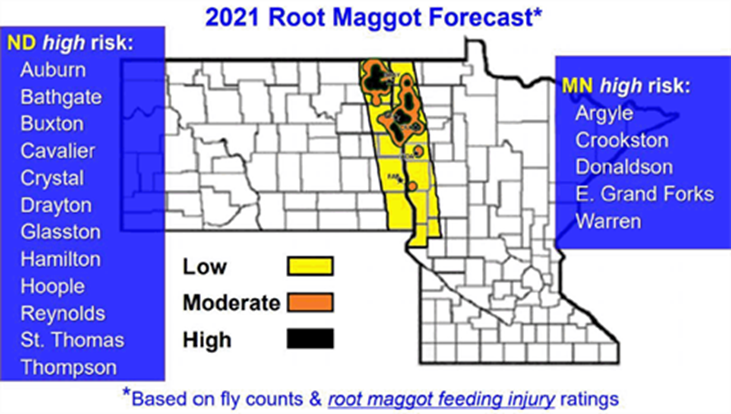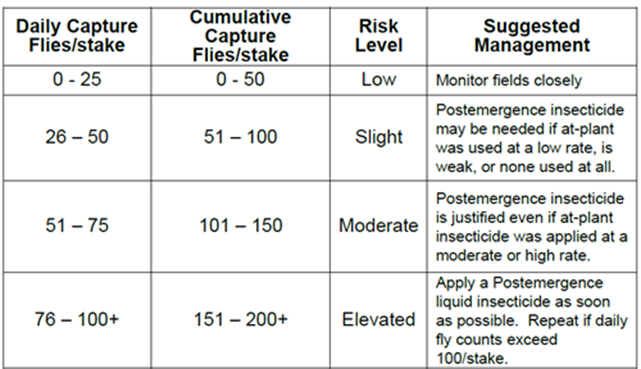617 - Root Maggot Warpath
Sugarbeet Root Maggot (SBRM) has significantly increased its footprint on American Crystal’s growing area. The number of sugarbeet acres located in moderate to severe areas is about 130,000 acres. This creates the need for aggressive control measures to control losses and to stop and shrink the expanding footprint.
The Ag Staff have developed SBRM severity maps. Below is a comparison of what was witnessed in crop year 2015 to what was seen in 2020. Expansion has occurred significantly from East Grand Forks (EGF) to Crookston as well as new areas east of Stephen and Argyle.
Sugarbeet Root Maggot Severity Maps Comparison
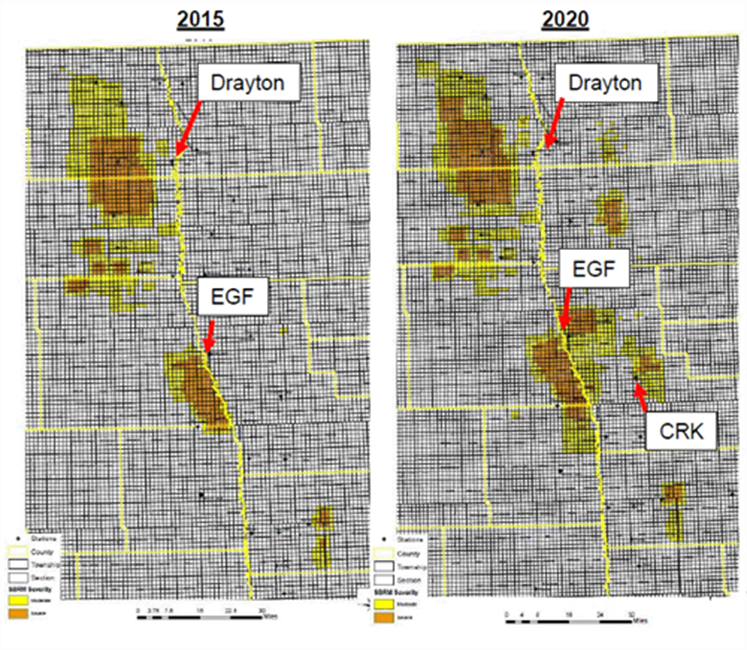
Sugarbeet Root Maggot Severity 2020
2021 SBRM Forecast Map
Dr. Mark Boetel at NDSU has developed a 2021 SBRM Forecast Map based on the 2020 populations and sugarbeet damage ratings taken in the early fall. Damage ratings are a direct correlation to SBRM larvae that made through last year’s control practices, fed on last year’s sugarbeet crop, and will become flies in 2021 to complete the life cycle.
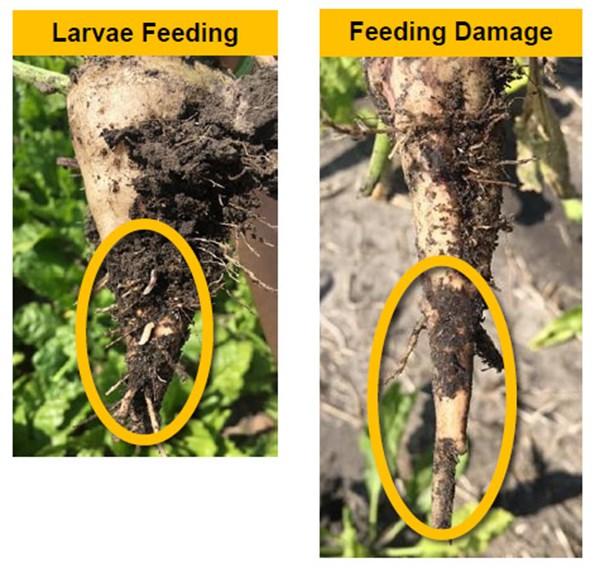
Knocking down SBRM populations is a twofold process
- Apply an effective At-Plant insecticide to control the feeding larvae the flies will lay.
- Use well-timed effective POST insecticides to knock down the SBRM fly population, there-by reducing the population of larvae the At-Plant insecticide must control.
Dr. Boetel: Postemergence Spray Timing for SBRM Control St. Thomas, ND: Combined Analysis (2015-2018)
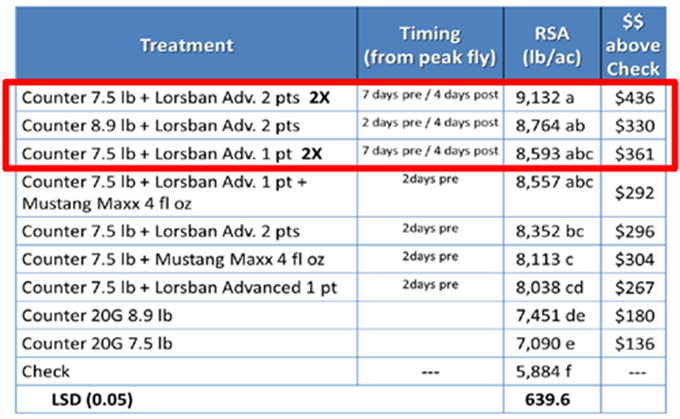
2021 ACSC SBRM Control Recommendations
The Best Control Plan
- Counter At-Plant followed by Chlorpyrifos and/or Thimet POST Applied
- As fly populations surge, POST insecticides may need to be applied prior to predicted “Peak Fly” at increments of 70-100 Flies/stake count, as flies are present at high enough levels to warrant control.
NDSU and American Crystal Ag Staff take SBRM fly stake counts to monitor fly activity. You can monitor your area’s numbers by following the below link. Counts are made every Monday, Wednesday, and Friday during SBRM season.
SBRM Degree Days (DD)
SBRM flies start to show up typically in the last week of May to first week of June. Peak Fly typically occurs at 651 DD.
Degree Days are monitored at NDAWN
Additional Information on Degree Days
This is information has been provided to help develop a Sugarbeet Root Maggot control plan. As always, please contact your Agriculturist with any questions and further refinement.
Important Notice: Please read and follow label directions on all pesticides, this document is not a substitute.

